Filter by

Energy Law: An Introduction
The aim of this short text is simply to introduce a reader to this topic. It is intended for a global audience and rather than being restricted to potential energy law students of a particular country. It is also written for students of other disciplines such as geographers, social scientists and engineers. It should also be engaging to those in a variety of professional practices who want an a…
- Edition
- -
- ISBN/ISSN
- 978-3-319-14191-6
- Collation
- 1 b/w illustrations, 1 illustrations in colour
- Series Title
- -
- Call Number
- -

Energy Law in Brazil Oil, Gas and Biofuels
This book describes the energy-law situation in Brazil. It focuses on three specific energy sectors: oil, natural gas and biofuel. The decision to concentrate on these areas takes into account the role that these energy sectors play in the economic, political and legal systems in Brazil, as well as the fact that they are the primary subjects of current discussions surrounding economic regulatio…
- Edition
- -
- ISBN/ISSN
- 978-3-319-14268-5
- Collation
- 2 b/w illustrations, 3 illustrations in colour
- Series Title
- -
- Call Number
- -
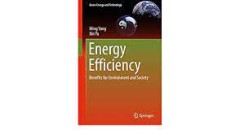
Energy Efficiency Benefits for Environment and Society
This book discusses how energy efficiency benefits the global environment, national energy security, local pollution mitigation, natural resource conservation, and utility bill reduction. In addition, this book provides many hands-on skills and knowledge to identify and develop energy efficiency projects. The literature review shows that energy efficiency has become the first fuel in the world …
- Edition
- -
- ISBN/ISSN
- 978-1-4471-6666-5
- Collation
- 34 illustrations in colour
- Series Title
- -
- Call Number
- -
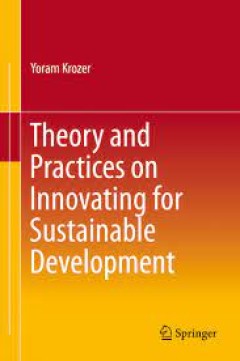
Theory and Practices on Innovating for Sustainable Development
This book explains how income growth and better environmental qualities go hand in hand, and reviews the drivers and barriers to sustainable innovation on the basis of real-life cases. It discusses why innovation-based income growth reduces environmental impacts and how the huge global markets for sustainable innovation are currently hampered by protectionist policies. Subsequently, diverse sus…
- Edition
- -
- ISBN/ISSN
- 978-3-319-18636-8
- Collation
- XI, 195
- Series Title
- -
- Call Number
- -
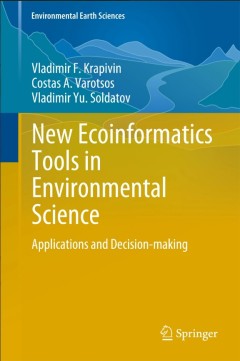
New Ecoinformatics Tools in Environmental Science:Applications and Decision-m…
This book provides new insights on the study of global environmental changes using the ecoinformatics tools and the adaptive-evolutionary technology of geoinformation monitoring. The main advantage of this book is that it gathers and presents extensive interdisciplinary expertise in the parameterization of global biogeochemical cycles and other environmental processes in the context of globaliz…
- Edition
- 1
- ISBN/ISSN
- 978-3-319-13977-7
- Collation
- XXXIII, 903
- Series Title
- Environmental Earth Sciences
- Call Number
- -
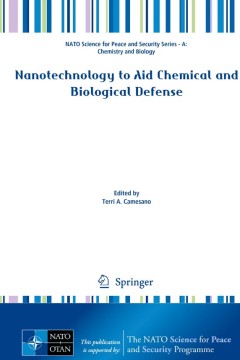
Nanotechnology to Aid Chemical and Biological Defense
This book presents research into chemical, biological, radiological and nuclear (CBRN) defense and environmental security, exploring practical implications of the research. Contributions from a diverse group of international civilian researchers present the latest work on nanotechnology problems in this area, looking at detection, protective technologies, decontamination and threats to environm…
- Edition
- 1
- ISBN/ISSN
- 978-94-017-7217-4
- Collation
- XIV, 221
- Series Title
- NATO Science for Peace and Security Series A: Chemistry and Biology
- Call Number
- -
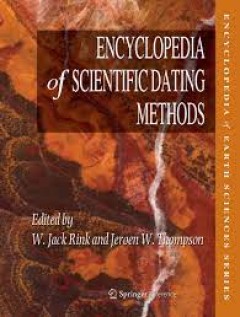
Encyclopedia of Scientific Dating Methods
This volume provides an overview of (1) the physical and chemical foundations of dating methods and (2) the applications of dating methods in the geological sciences, biology, and archaeology, in almost 200 articles from over 200 international authors. It will serve as the most comprehensive treatise on widely accepted dating methods in the earth sciences and related fields. No other volume has…
- Edition
- -
- ISBN/ISSN
- 978-94-007-6304-3
- Collation
- 115 b/w illustrations, 260 illustrations in colour
- Series Title
- -
- Call Number
- -
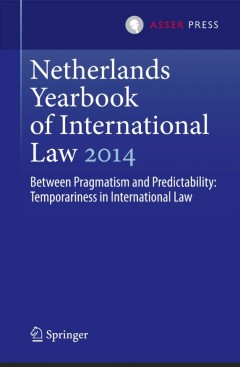
Netherlands Yearbook of International Law 2014
The Netherlands Yearbook of International Law was first published in 1970. It offers a forum for the publication of scholarly articles of a more general nature in the area of public international law including the law of the european Union. One of the key functions or purposes of international law (and law in general for that matter) is to provide long-term stability and legal certainty. Yet, …
- Edition
- 1
- ISBN/ISSN
- 978-94-6265-059-6
- Collation
- XII, 413
- Series Title
- Netherlands Yearbook of International Law
- Call Number
- -

The Water We Eat Combining Virtual Water and Water Footprints
This book pursues a comprehensive, multidisciplinary approach in order to analyze the relationship between water and food security. It demonstrates that most of the world’s economies lack sufficient water resources to secure their populations’ food requirements and are thus virtual importers of water. One of the most inspiring cases, which this book is rooted in, is Italy: the third largest…
- Edition
- -
- ISBN/ISSN
- 978-3-319-16393-2
- Collation
- -
- Series Title
- -
- Call Number
- -
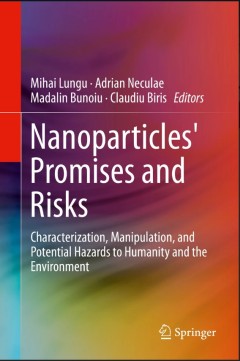
Nanoparticles' Promises and Risks
The focus of this interdisciplinary volume is on four areas of nanoparticle research: characterization, manipulation, and potential effects on humanity and the environment. The book includes a comprehensive collection of data on industrial nanoparticle creation and the characterization of the nanoscale products of these processes. The authors describe the effects of these nanoscale structures o…
- Edition
- 1
- ISBN/ISSN
- 978-3-319-11727-0
- Collation
- XIV, 355
- Series Title
- -
- Call Number
- -
 Computer Science, Information & General Works
Computer Science, Information & General Works  Philosophy & Psychology
Philosophy & Psychology  Religion
Religion  Social Sciences
Social Sciences  Language
Language  Pure Science
Pure Science  Applied Sciences
Applied Sciences  Art & Recreation
Art & Recreation  Literature
Literature  History & Geography
History & Geography